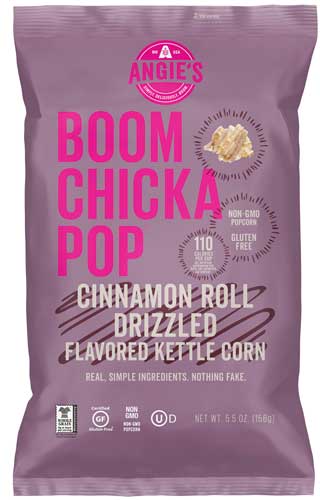Testing Package Design
PACKAGING
By designing the optimal package, packaging and food manufacturers can reduce food and package waste and ensure that packaging meets the needs of markets and consumers. Numerous tests guide food package design and material selection. Methods to measure package distribution, consumer package use, and the ability of a package to drive purchase at retail continue to evolve and increase in accuracy.
 Dynamics of Simulating Distribution
Dynamics of Simulating Distribution
Food packaging may experience vibration-related damage when foods are shipped from food manufacturers to distribution centers, retailers, and consumers. This damage frequently takes the form of scuffed printing and labels, catastrophic unit-load collapse, and holes in packages (through which product leaks). Often, when a single container within a pallet leaks, the entire pallet of product needs to be discarded. Vibrations also affect the stability of ingredients, including oil and water emulsions made with increasingly smaller particle sizes. The incidence of damaged food products is escalating because of intensified and complex vibrational hazards during distribution, resulting in increased food waste.
Distribution testing is intended to mimic the conditions of actual distribution and determine the optimum package design that will protect products from hazards without over-packaging. There are two types of distribution testing: static and dynamic. Static distribution testing simulates what happens when product is stacked within a warehouse. Dynamic distribution testing assesses what happens to packages during shipping and includes vibration testing. Distribution testing within a laboratory environment is a critical step in making sure a product is adequately protected. For example, when the food industry switched the material used for beverage containers from glass to plastic, static testing revealed that cases of polymer bottles could not be stacked as high as glass bottles; warehouse racking systems were modified to reduce the static loads on the polymer bottles.
Vibration-related damage in the packaged food industry and other industries is causing a reassessment of distribution testing standards. Instructor Patrick McDavid, Michigan State University (MSU), explains the recent focus on the reassessment of dynamic testing: “Power spectral density (PSD) single-axis random vibration has not changed in the past three decades. But packaging and distribution patterns have changed. When PSD single-axis vibration accurately assessed the main source of vibration-related damage, aluminum cans and [polyethylene terephthalate] bottles were [a] thicker gauge and within corrugated cases. Now, most containers have been light-weighted and are of a thinner gauge and are shrink-wrapped on pallets instead of being packed within corrugated cases on a pallet as in the past. The length and breadth of distribution has increased as factories and packaging have consolidated, and more products are shipped directly to consumers.” As a result, packaging often can pass single-axis vertical test standards, but in actual distribution, damage occurs. This means that single-axis testing does not match distribution processes.
As chair of the International Safe Transit Association (ISTA) technical division board (which is exploring the rationale for multiple-axis testing), McDavid is vested in ensuring that distribution testing more accurately reflects what happens in actual distribution. This reassessment involves many industry groups. “The debate is focused on assessing how many axes are needed to accurately reflect current distribution. We are seeing many products exposed to multi-axis (horizontal, vertical, and longitudinal) vibration as well as rotations around these axes,” McDavid says. This happens when trucks swerve or brake rapidly, waves hit ships, and delivery trucks jostle from uneven roads. During the presentation “Comparison of Vibration Simulation Methods on Light-Weighted Distribution Packaging” at this year’s ISTA TransPack Forum, McDavid and Ricky Speck, an assistant professor at MSU, suggested that packaging used to protect individual containers, such as stretch wrap materials, plays a vital role in vibration. More importantly, vibration-related damage is seen on multi-axis testing and not single-axis testing. Interestingly, the technology needed for multi-axis vibration testing can be readily adapted from car and airplane simulators. Evolving demands for distribution testing require new test methods, and significant progress is underway to accomplish this.
Consumer Package Testing
Food attributes are tested, compared, and refined by humans and analytical instrumentation, and the same is true for food packaging. Package testing helps guide packaging design to ensure that contents are safe and that packaging is appropriate for human use. Manufacturers of consumer packaged goods are refining these standards to assess specific attributes related to the use of their products and packages. One critical element for most food packaging is how a package is opened. Instruments that measure peel strength and removal torque quantify the ability to open containers while gauging how humans handle packaging provides more depth of direction for package design. For example, the force required to open various package formats for ground beef is measured analytically. Then the visual acuity and fine motor skills required to puncture overwrap, peel stretch wrap, or cut through a seal between formed web and rollstock are assessed and compared to provide preliminary direction for an optimal package format.
Designs are finetuned for the target market. For example, tweaks such as more-apparent peel-here tabs and colored or textured areas for fingers to grasp are tested to determine whether they meaningfully improve consumers’ experiences. Package design that aligns with processing technologies that require superior seals and facilitates ease of opening is a second step (after food safety) in ensuring these technologies can meet consumers’ needs. For example, easy-open features are now common for retort processed canned foods. New technologies such as high-pressure processing, microwave-assisted thermal sterilization, pulsed light, and modified atmosphere need easy-open features incorporated into package design.
Methods to assess the ease of opening packages are quite refined, but methods to accurately assess the closing of packages are just beginning to emerge. The ability to reclose exists on many packages, but ensuring that reclosing features can extend product shelf life and quality to reduce food waste is a recent focus of testing research. Methods under development include ease of consumer reclose operation, visual acuity for reclosing, the force required to reclose, the ease of avoiding product in the reseal area, the number of times reclosing is possible, and the likelihood of contamination through multiple uses.
Advances are also being made in tests that evaluate packaging designed to reduce cross-contamination. Testing for cross-contamination involves swabbing for microbes on likely surfaces used by consumers. Cross-contamination can be reduced via package design. For example, a package of individually wrapped marinated salmon can be peeled open and the salmon added to a pan without the consumer having to touch the raw salmon. One aspect of the package development process involves assessing consumers’ ability to peel open the salmon package with damp hands. In addition, evaluating the ease of proper package disposal is increasingly part of testing package design. This is prompted by the rise in ocean plastic, some of which is recyclable. This testing assesses the access to recycling areas as well as how readily consumers know that container components can be recycled and their willingness to participate in the recycling process. The goal is to achieve package designs that guide consumers intuitively in the proper disposal of all packaging. This takes various forms; for example, in many apartment buildings, recyclable materials need to be carried by residents to the main floor, and packaging that intuitively directs consumers to compress packaging for ease of carrying is being designed for urban locations.
 Retail Marketing
Retail Marketing
Assessing packaging designed for the retail environment is complex. One of the main purposes of packaging is to inform consumers of product attributes, so catching their attention is mandatory. Package graphics are a powerful brand differentiator, and colors harness the ability to attract consumers. For example, in the egg-packaging category, which is dominated by gray molded pulp and clear clamshells, Huhtamaki switched to grass-derived molded pulp clamshell to communicate a more natural product. In crowded chip categories dominated by clear packaging, opaque, multicolored metallized bags of Boomchickapop are easy to spot. For food packaging categories defined by color, other means of attracting attention are needed. For example, in the ketchup aisle, ketchup labels are on top of a red ketchup background and color is not a differentiator. Subtle cues such as a gloss finish instead of a matte label on ketchup bottles serve to reflect or absorb light and differentiate brands. A frosted finish on flexible packaging print is increasingly more common in frozen seafood packaging; it communicates that a product is frozen. Windows that enable a visual of the product communicate authenticity and attract consumers.
Determining how readily packaging draws consumers’ attention is a complex field of study. Eye-tracking studies have guided package design for more than two decades. The amount of time that humans spend looking at packages is measured with the use of computerized simulated store shelves, projected shelving, and actual store shelves. The most common method to track eye movement is the combined pupil and corneal reflection in which a fixture is mounted on a test subject’s head to register eye movement and packages are marked with infrared markers. Viewing packages over the internet for potential purchases are readily tracked via eye trackers mounted on computer screens. On-screen assessments of package design changes are less expensive and generally less accurate than on-shelf testing in which the consumer walks through the testing environment. However, when a virtual environment is created to simulate the store environment, accuracy increases dramatically.
Virtual reality gaming technology has been adapted to construct stores in which consumers experience variable store elements while their responses to a package design changes are tracked. A flexible virtual reality platform for assessment allows for package designs to be optimized for different store formats, to assess competition, and to determine how cross-merchandising can increase. Since package designs are virtual, they can be readily changed, and designs and store placement can be optimized for higher sales.
 Claire Koelsch Sand, PhD, Contributing Editor
Claire Koelsch Sand, PhD, Contributing Editor
CEO, Packaging Technology and Research
Adjunct Professor, Michigan State Univ. and California Polytechnic State Univ.
[email protected]
